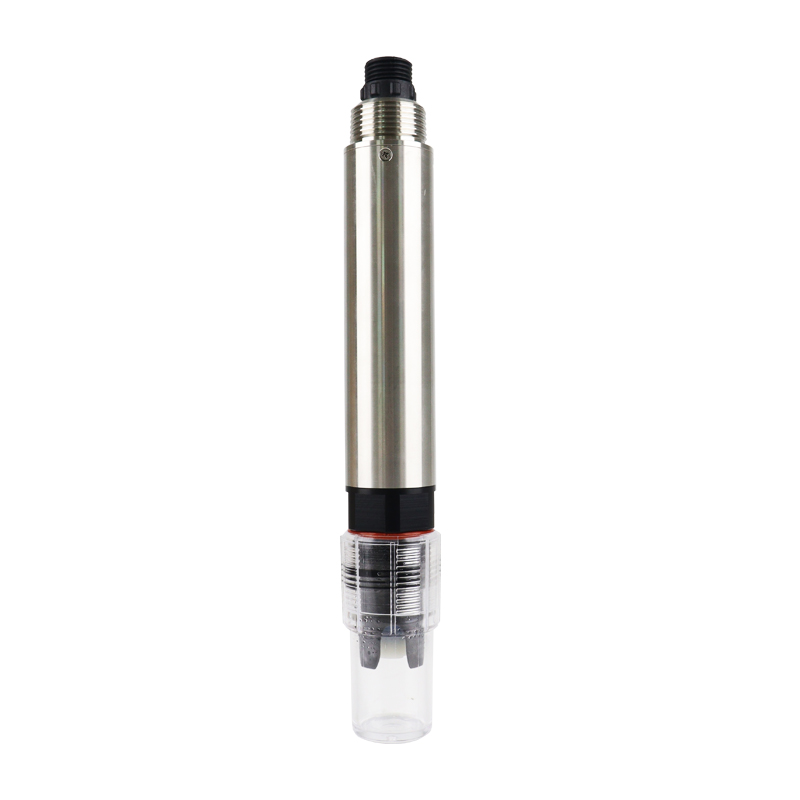Tianqiong Sensor IOT Technology Co., Ltd
Sales Manager:Ms. Emily Wang
Cel,Whatsapp,Wechat:+86 15898932201
Email:info@fengtutec.com
Add:No. 155 Optoelectronic Industry Accelerator, Gaoxin District, Weifang, Shandong, China

Sales Manager:Ms. Emily Wang
Cel,Whatsapp,Wechat:+86 15898932201
Email:info@fengtutec.com
Add:No. 155 Optoelectronic Industry Accelerator, Gaoxin District, Weifang, Shandong, China

Model:FT-S2
Brand:tianqiong
1.Water Hardness Meter Product Introduction
Water Hardness Meter is used to quickly and accurately measure water hardness CaCO3, and the total hardness range of the water sample is up to 1000mg/L.S2 Water Hardness Meter is made of a calcium-magnesium selection electrode based on PVC film.It is used to test the total hardness in water (in terms of CaCO3) with temperature compensation, ensuring that the test is fast, simple, accurate and economical.This user manual introduces the technical parameters, usage and maintenance and communication protocols of the total hardness sensor in detail.
Signal output: RS-485 bus, ModbusRTU protocol, easy to connect to third-party devices such as PLC, DCS, industrial control computers, general-purpose controllers, paperless recording instruments or touch screens.
The patented calcium-magnesium ion electrode, the internal reference liquid penetrates extremely slowly from the microporous salt bridge under a pressure of at least 100 KPa (1Bar).Such a reference system is very stable and has a longer lifespan than that of ordinary industrial electrodes.
Easy to install: 3/4NPT pipe threads for easy sinking installation or installation in pipes and tanks.
IP68 protection level.
2.Water Hardness Meter Technical Parameters
| Range and resolution | 0~1000.0mg/L; 0.1 |
| Accuracy | ±10% of reading; ±0.3℃ |
| Response time (T90) | <60s |
| Minimum checkout limit | 0.9 (0-1000mg/L) |
| Calibration method | Two-point calibration |
| Cleaning method | / |
| Temperature compensation | Automatic temperature compensation (Pt1000) |
| Output method | RS-485 (ModbusRTU), 4-20 mA (optional) |
| Storage temperature | -5~40℃ |
| Working conditions | 0~40℃, ≤0.2MPa, pH: 4~10 |
| Housing material | 316L |
| Installation method | Putting installation, 3/4 NPT |
| Power consumption | 0.2W@12V |
| powered by | 12~24VDC |
| Protection level | IP68 |
3.Water Hardness Meter Maintenance and Maintenance
1.Use and maintenance
Before testing, the electrode should be soaked in tap water for 48 hours.After activation is completed, clean it in deionized water.The electrode should be stored dry if it is not used for a long time (more than two weeks).The electrode's induction element should be put into the protective cap.
Check whether the terminals are dry.If there is any stain, please wipe with anhydrous alcohol and blow dry before use.Long-term soaking in distilled water or protein solution should be avoided and contact with silicone grease should be prevented.The electrode that has been used for a longer period of time, its PVC membrane may become translucent or contain deposits attached, and it can be rinsed with distilled water (or deionized water).The electrode has a long time to use and when measurement errors occur, corrections must be made.
When the calibration and measurement are still not possible when the electrode is maintained and maintained by the above method, it means that the electrode has failed.Please replace the electrode.
2.Calibration of sensors
Note: The sensor has been calibrated before leaving the factory.If the measurement error is not exceeded, it should not be calibrated at will.
a) Zero point calibration
Put the sensor into the zero-point standard solution, wait for 10 minutes, and wait for the value to stabilize to see if the displayed value is within the error range.If not, zero-point calibration is required.For calibration instructions, refer to the appendix.
b) Slope calibration
Put the sensor into the slope standard solution, wait for 10 minutes, and wait for the value to stabilize to see if the displayed value is within the error range.If not, slope calibration is required.For calibration instructions, refer to the appendix.
The working principle of Ground Penetrating Radar (GPR) is based on the propagation characteristics of electromagnetic waves. It emits high-frequency electromagnetic waves into the ground. When these waves propagate through underground media, once they encounter interfaces between different media—s...
FT-NQ8 Meteorological Observation Station, specifically designed for agriculture, can accurately monitor 8 key elements. Each of these 8 elements is closely related to crop growth. Temperature is a key factor affecting the growth rate and physiological activities of crops. Different crops have speci...
Canals, as critical water transportation corridors, are highly sensitive to meteorological conditions and require multiple weather sensors to monitor their climatic status, ensuring navigation safety and the normal operation of canal facilities.What types of weather sensors are needed for canals?Sen...
The Atmospheric Visibility Sensor is a device that accurately acquires atmospheric visibility data.The working principle of the Atmospheric Visibility Sensor is based on the theory of light scattering. The instrument is equipped with a light source of a specific wavelength, mostly an infrared LED li...